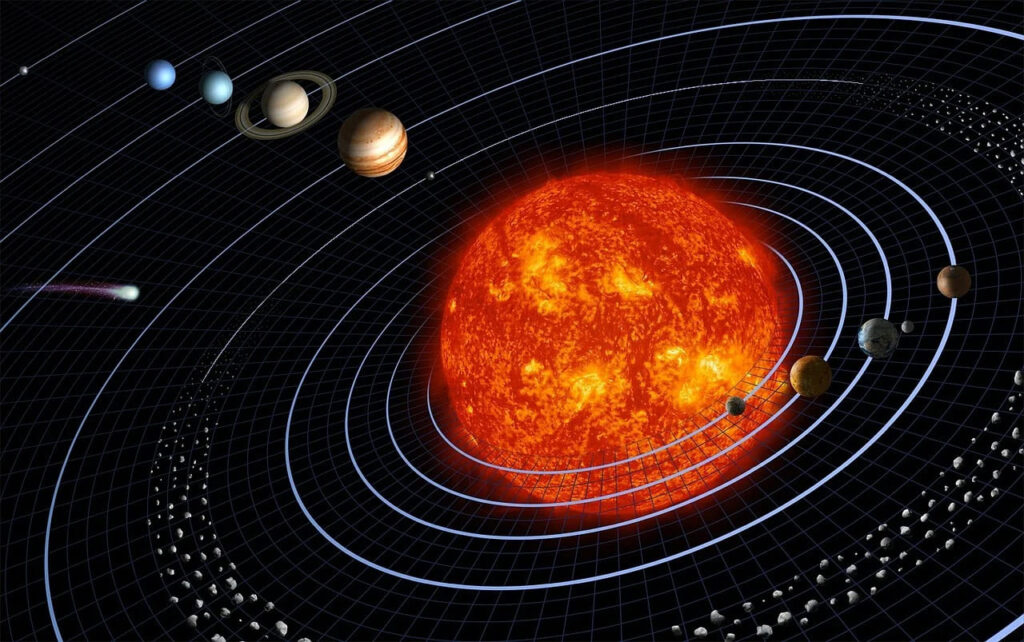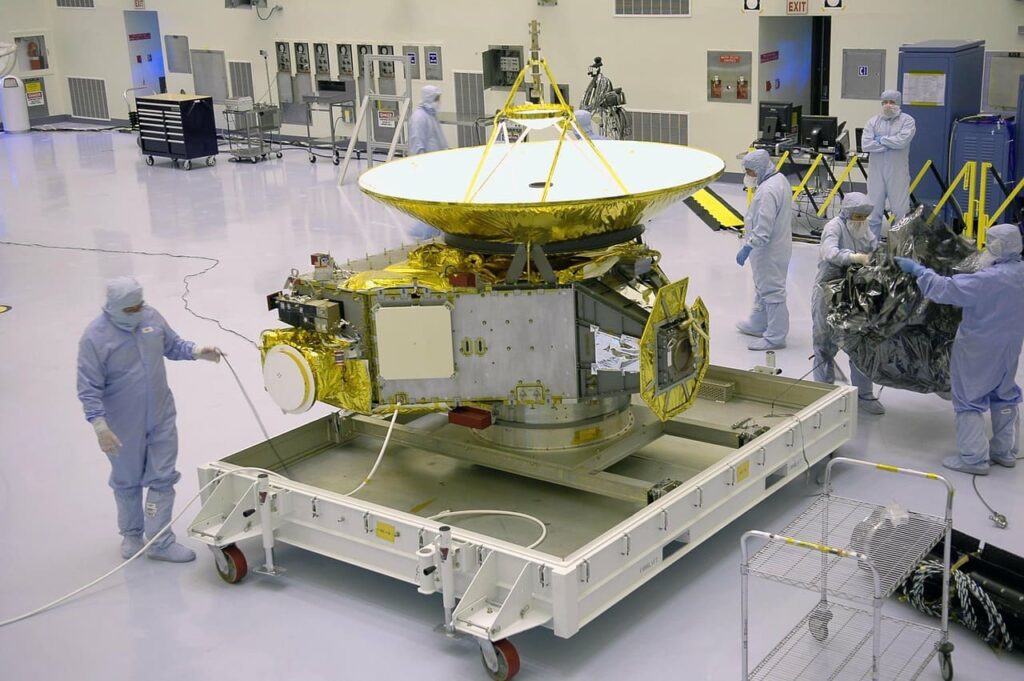Until August 2006, Pluto held the esteemed title of the ninth planet in our solar system but what happened afterwards shocked the scientific community and the whole world: this title was taken away, and Pluto was demoted to a dwarf planet. This decision, made by the International Astronomical Union (IAU), marked a significant reevaluation in our understanding of planetary definition. In this article, we will look at all the details regarding reasons why Pluto is not a planet. Additionally, we will delve into the essential characteristics and fascinating details that define this small celestial body, shedding light on its unique place in our solar system.

Table of Contents
What is considered to be a Planet?
The International Astronomical Union (IAU) defines a planet as per three criteria:
- Orbiting the Sun: A planet must orbit the Sun directly. It distinguishes moons which orbits planet.
- Spherical Shape: A planet must be large enough so that its own huge gravity makes itself spherical in shape.
- Clearing its Orbit: The size of the celestial body should be big such that its gravity can make a clear path for its orbit around the Sun removing the other bodies or debris.

Reasons why Pluto is not a planet
The above criteria were defined by the IAU in 2006. Pluto fulfills the first two criteria, whereas it falls short on the third criterion. According to the IAU, a planet must have “cleared the neighbourhood” around its orbit, meaning it must be gravitationally dominant enough to either absorb or push out other objects in its orbital path around the Sun. Pluto shares its orbital zone with other similar-sized objects such as Eris, Haumea, and Makemake in the Kuiper Belt, a region of icy bodies beyond Neptune. These celestial bodies have orbits that overlap with Pluto’s.
Unlike the eight planets, which have largely cleared out debris and smaller bodies from their orbits, Pluto’s orbit intersects with the population of the Kuiper Belt. Its gravitational influence is not dominant enough to qualify it as having cleared its orbit, which is a key reason why it was reclassified as a dwarf planet.
Debate of Planet
In 2005, astronomers found another similar-sized object beyond Neptune in our solar system and thought it would become the 10th planet. People back then questioned the precise definition of planets causing uncertainty and ambiguity. There were numerous agreements and disagreements surrounding this debate. IAU later named this object “Eres”. After that in the year 2006, during the IAU General Assembly, the exact definition of planets was clarified, resulting in the demotion of Pluto to the status of a “dwarf planet”. Pluto, Eres, Ceres and a few others are dwarf planets. IAU defines them as spheres in shape, orbiting the Sun but but do not clear their orbits or neighbourhood as previously discussed.
Impact of this decision worldwide (Why is Pluto not considered a planet? )

On 24 August 2006, after the historic voting of astronomers in Prague, Czech Republic in the IAU General Assembly, the world remained shocked. People had the question of why is Pluto no longer a planet, they were confused and objected as this decision collided with their old beliefs, traditions and the history of several decades. People and other opposing astronomers saw it as a demotion of Pluto.
They object that there are asteroids that actual planets are not able to clear out from their orbit still they are called planets, then there are other significant astronomical bodies as well such as Ceres (the biggest asteroid in the asteroid belt that lies between Mars and Jupiter’s orbit) that are considered dwarf planets, same as Pluto.
Important information about Pluto
All the 8 planets were discovered by humans before 1850. However, it took decades extra for astronomers to discover Pluto. It was the year 1930 when American astronomer Clyde Tombaugh discovered Pluto. Pluto is named after the Roman god of the underworld, Pluto.
1. Physical Characteristics
- Pluto is a tiny, frigid planet that is about two-thirds the size of Earth’s moon, with a diameter of 2,377 km (1,476 miles).
- Pluto has eccentric orbit. It is about 4.4 billion km (2.7 billion miles) when it is closest to the Sun which is called Perihelion. And it is around 7.3 billion km (4.5 billion miles) when it is farthest from the Sun which is called Aphelion.
- Pluto is brownish red in colour along with white and tan. Pluto’s surface is primarily composed of frozen nitrogen, methane, and carbon monoxide. It has mantle of water ice.
2. Location
Pluto is a dwarf planet that is located in a far-off area of our solar system that extends beyond Neptune known as the Kuiper Belt.
3. Pluto’s scientific exploration

New Horizons spacecraft was launched by NASA on 19 January 2006 from Cape Canaveral Air Force Station in Florida on an Atlas V rocket. The mission’s objective was to study Pluto and its moons, study KBOs (Kuiper Belt Objects). It flew by Pluto in July 2015 and provided precious images and data. It was a significant milestone in planetary explorations.
4. Moons of Pluto
Pluto has 5 moons which are Charon, Styx, Nix, Kerberos, and Hydra. Charon is the biggest moon which was discovered in the year 1978. It is half the size of Pluto.
Table of Information
| PARAMETER | VALUE |
| Orbital Period | Approximately 248 Earth years |
| Surface Temperature | Average of about -230°C (-382°F) |
| Distance from Sun (Closest) | 4.4 billion km |
| Distance from Sun (Farthest) | 7.3 billion km |
| Surface Area | 1.77×107 km2 (about the same surface area as Russia) |
| Volume | 0.00651 Earths |
| Mass | 0.00218 Earth Mass 0.177 Moon Mass |
| Diameter | 2,377 km |
Conclusion
Pluto holds a special place in our solar system and in the hearts of many. The inability to clear its orbital zone of debris like other planets, coupled with its location within the crowded Kuiper Belt are the reasons why Pluto is not a planet. As our understanding of planetary science evolves, Pluto remains a fascinating object of study, offering clues to the formation and evolution of our cosmic neighbourhood.
